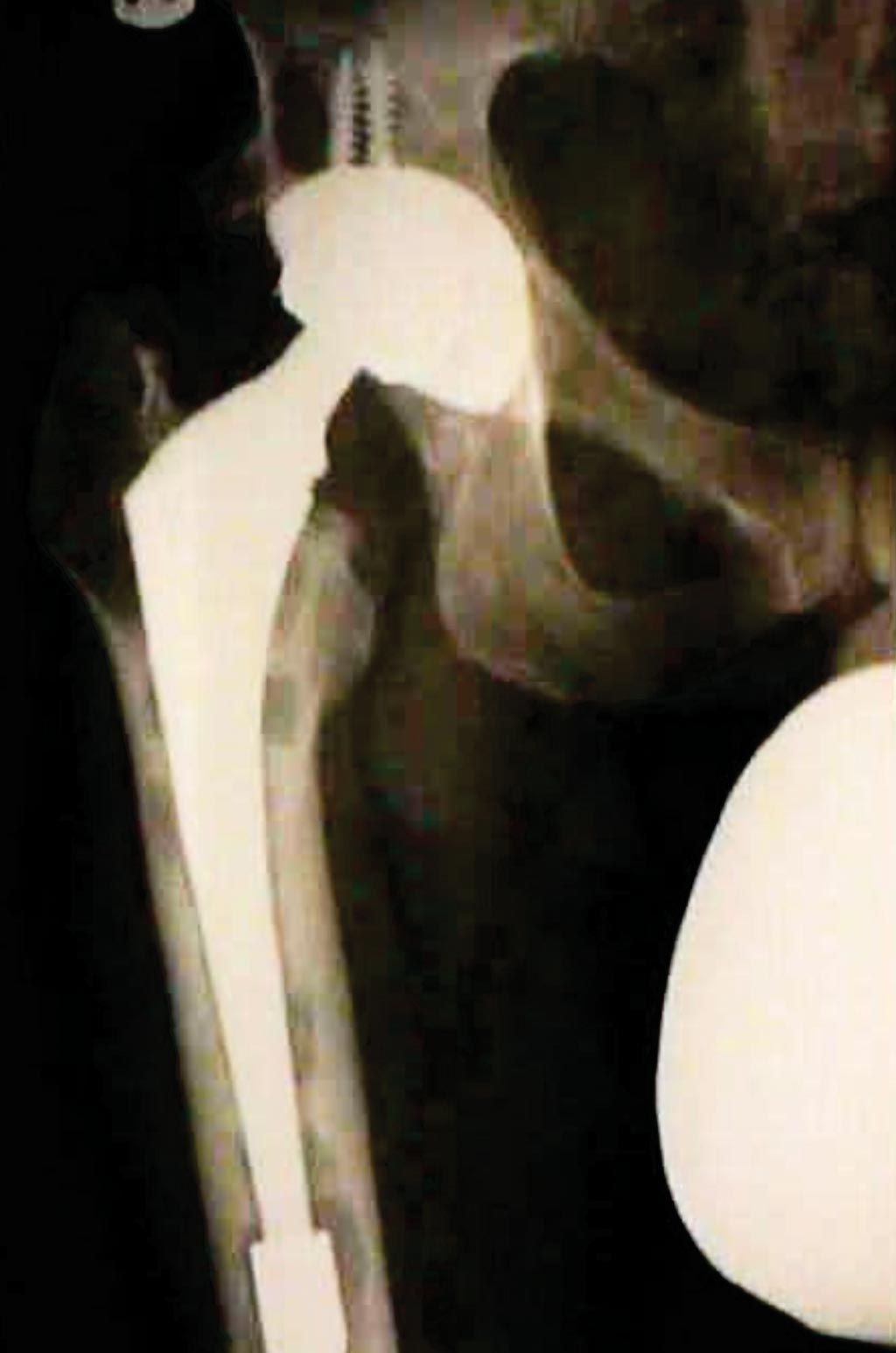Urinary Markers Predict Bone Problems after Hip Replacement
By LabMedica International staff writers
Posted on 20 Jun 2018
Osteolysis is an active resorption of bone matrix by osteoclasts and can be interpreted as the reverse of ossification. Although osteoclasts are active during the natural formation of healthy bone the term "osteolysis" specifically refers to a pathological process.Posted on 20 Jun 2018
Peri‐implant osteolysis is commonly diagnosed after substantial bone loss has occurred, making revision surgery more challenging. A method has been developed was to identify urinary biomarkers that differentiate total hip replacement patients who eventually develop osteolysis from patients who do not.

Image: A radiograph of 50-year-old patient with a well-placed acetabular cup against the tear drop and well placed femoral stem; after seven years, the patient has developed extensive osteolysis (Photo courtesy of Duke University Medical Center).
Scientists at Rush University Medical Center (Chicago, IL, USA) used a repository of 24‐hour urine samples collected prior to surgery and annually thereafter in 26 patients, 16 who developed osteolysis, and 10 who did not. They examined the markers at radiographic diagnosis, annually for six years preceding diagnosis, at the first post‐operative sampling point, and pre‐operatively. Patients in the osteolysis and non‐osteolysis groups were matched according to time post‐surgery and did not differ in the male:female ratio or age at surgery.
The team measured seven candidate biomarkers, including free deoxypyridinoline (DPD), cross‐linked N‐telopeptides (NTX), interleukin‐6 (IL‐6), interleukin‐8 (IL‐8), osteoprotegerin (OPG), α‐crosslaps (α‐CTX), and β‐crosslaps (β‐CTX). The scientists found that as an individual biomarker, DPD demonstrated the highest ability to predict osteolysis, with an area under the curve (AUC) in Receiver Operating Characteristic (ROC) analyses of 0.844 at six years prior to diagnosis. A panel of α‐CTX and IL‐6 was able to identify at‐risk patients with an AUC of 0.941 or greater at all post‐operative time points and an AUC of 1.000 pre‐operatively.
The authors concluded that their results demonstrate the potential of using non‐invasive biomarkers to identify patients at risk for peri‐implant osteolysis long before the emergence of radiographic signs. Further, the high accuracy of the pre‐operative biomarker levels demonstrates the potential importance of pre‐existing, patient‐specific factors driving subsequent osteolysis. The study was published on June 5, 2018, in the Journal of Orthopaedic Research.
Related Links:
Rush University Medical Center














